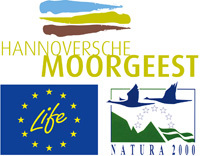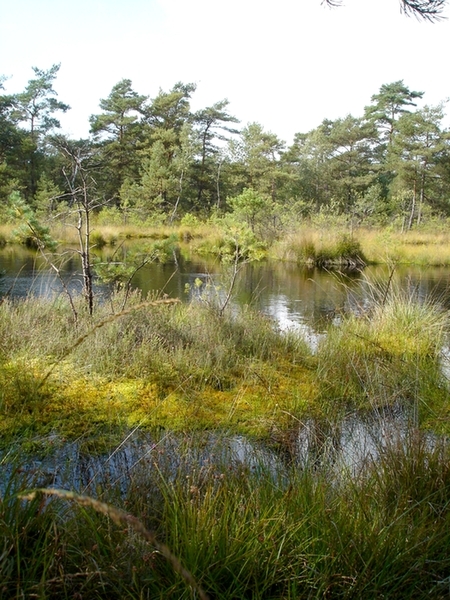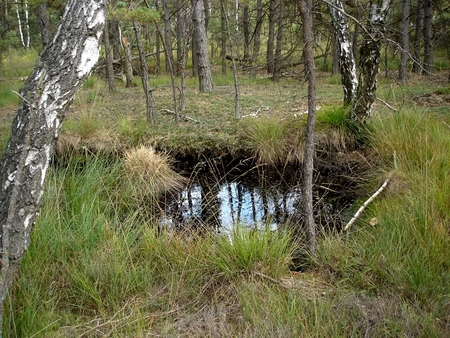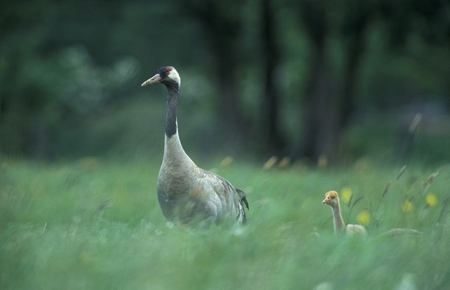
Otternhagener Moor
Otternhagener Moor was drained via a system of branch ditches toward larger outlying ditches, with the water in the north being conducted to the “Neue Auter” brook and, in the south and west to the “Auter” brook. In the summer, however, the ditches dry out to such an extent that surface runoff is then no longer discernible.
There are, also, a number of marshland ponds on Otternhagener Moor that have come about from former joined-together peat-cutting sites. There, too, open bodies of water all but disappear in the summer months.
Farmers used to cut peat manually over a large area on Otternhagener Moor, thus affecting nearly the entire bog and creating a landscape dominated by bog woodland and carr vegetation.
The former peat cutting sites are in different stages of development and regeneration. The open bodies of water are bordered by peat moss (Sphagnum) as well as standing and lying deadwood. Added to this there are extensive quaking peak moss mats from which hummocks covered with dwarf shrubs protrude, and former extraction ditches where heather (Calluna vulgaris) and purple moor grass (Molinia caerulea) grow.

Artikel-Informationen
Ansprechpartner/in:
Susanne Brosch
Nds. Landesbetrieb für Wasserwirtschaft, Küsten- und Naturschutz
Betriebsstelle Hannover-Hildesheim
- Projektleitung Life+ Moorgeest
Göttinger Chaussee 76 A
D-30453 Hannover
Tel: +49 (0)511 / 3034-3115





